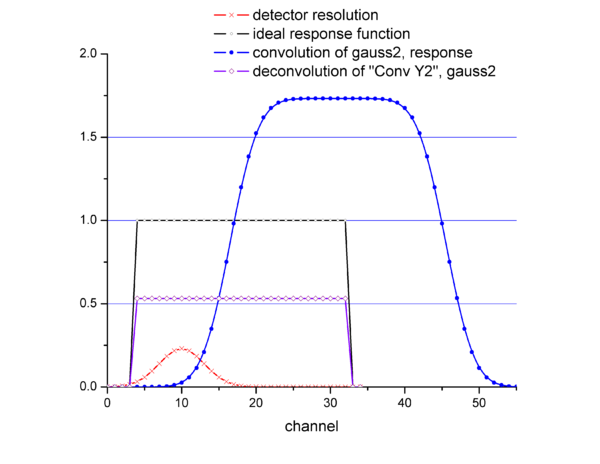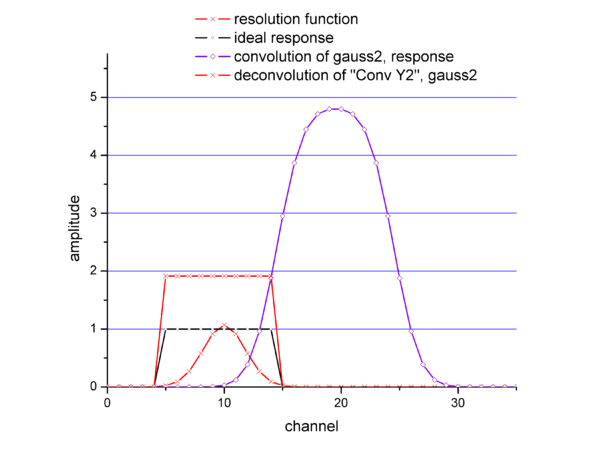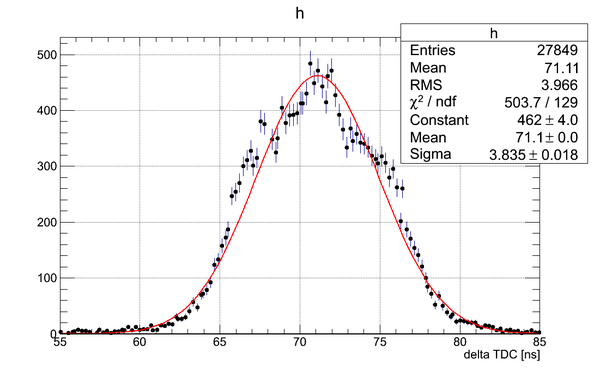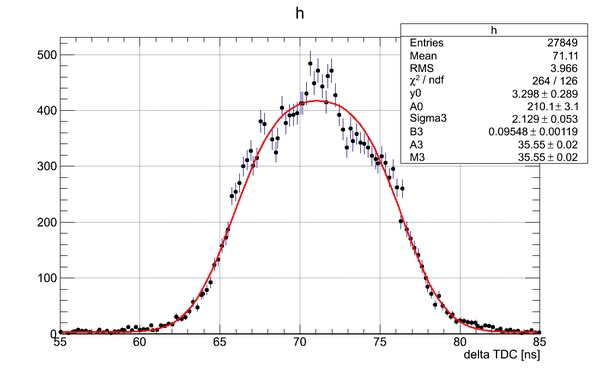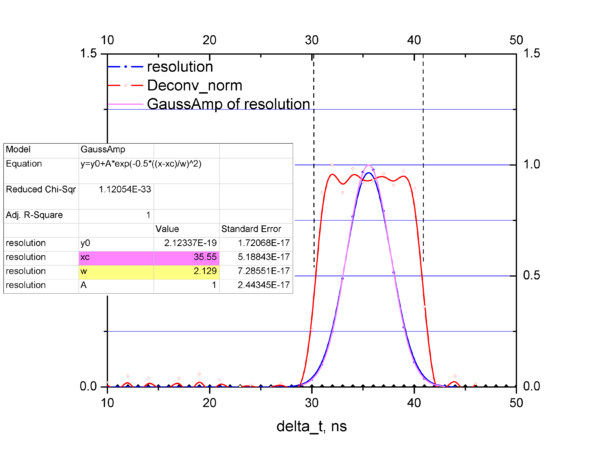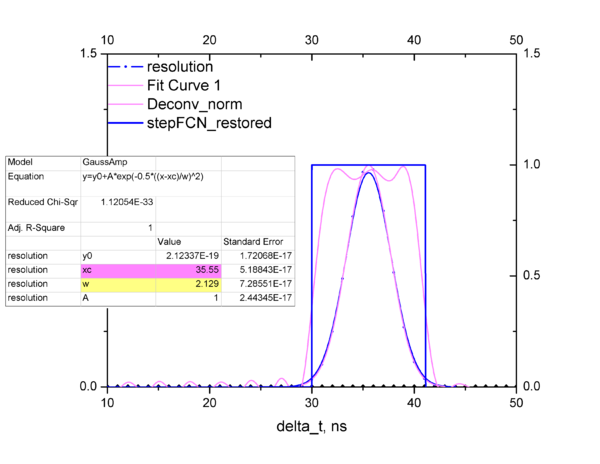Difference between revisions of "2n Position resolution"
| Line 23: | Line 23: | ||
As can be seen the gaussian fit parameter "w" is equal to the parameter "Sigma3" of my_fcn fit of the experimental data and also "xc" is equal to "M3". Hence fitting the experimental data with my_fcn one can get the position resolution of the detector. | As can be seen the gaussian fit parameter "w" is equal to the parameter "Sigma3" of my_fcn fit of the experimental data and also "xc" is equal to "M3". Hence fitting the experimental data with my_fcn one can get the position resolution of the detector. | ||
| − | Comparison of the response function obtained as a result of the deconvolution of my_fit function and gaussian with the parameters from the fit and response function drawn using the parameters from the fit. | + | Comparison of the response function obtained as a result of the deconvolution of my_fit function and gaussian with the parameters from the fit and response function drawn using the parameters from the fit ("A3" and "B3"). |
[[File:response_fcn_comparison.png | 600px]] | [[File:response_fcn_comparison.png | 600px]] | ||
Hence, any coordinate of the neutron hit has the following uncertainty in: sigma = 2.129 ns and its value converted into cm is 2.129 ns x 7.24 cm/ns = 15.4 cm. The total length of the active area of the neutron detector is 75 cm. | Hence, any coordinate of the neutron hit has the following uncertainty in: sigma = 2.129 ns and its value converted into cm is 2.129 ns x 7.24 cm/ns = 15.4 cm. The total length of the active area of the neutron detector is 75 cm. | ||
Revision as of 15:44, 3 May 2013
FFT algorithm test
So as can be seen, deconvolution of the final curve (blue) with the resolution function (red) will give the response step function (black) which has the same shape as the initial step function.
If we take narrower response function we will get
FFT application
Experimental distribution of TDC difference time spectrum (black dots) and gaussian fit of the data (red line) are shown below:
The fit of the experimental data with a function which is the result of convolution of the detector resolution function and detector response function is shown below
As can be seen the gaussian fit parameter "w" is equal to the parameter "Sigma3" of my_fcn fit of the experimental data and also "xc" is equal to "M3". Hence fitting the experimental data with my_fcn one can get the position resolution of the detector.
Comparison of the response function obtained as a result of the deconvolution of my_fit function and gaussian with the parameters from the fit and response function drawn using the parameters from the fit ("A3" and "B3").
Hence, any coordinate of the neutron hit has the following uncertainty in: sigma = 2.129 ns and its value converted into cm is 2.129 ns x 7.24 cm/ns = 15.4 cm. The total length of the active area of the neutron detector is 75 cm.
